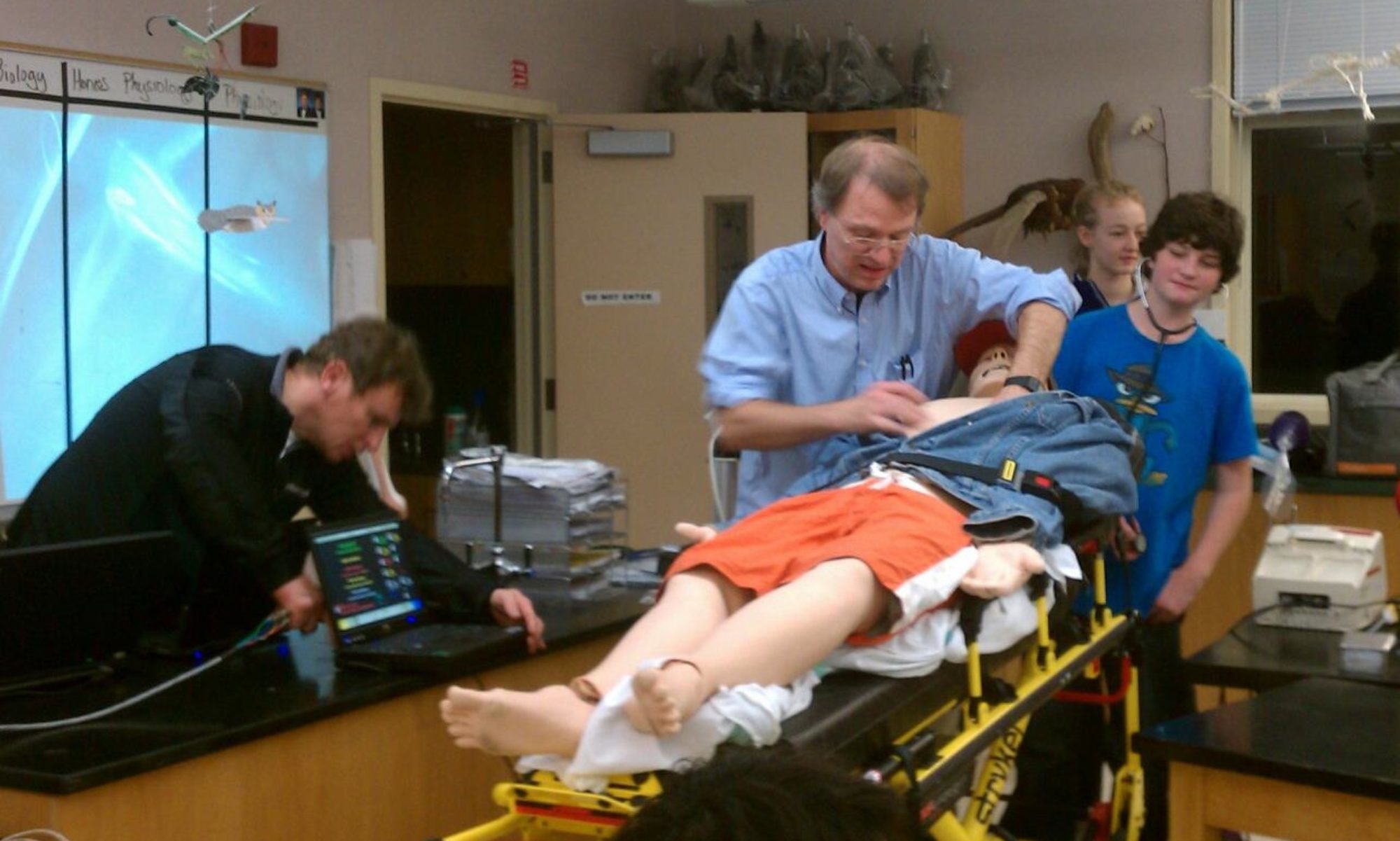She made a MOSFET, incredibly.
Here is it
The Decision Tree with Wired editor Thomas Goetz
Marin Science Seminar visited Kishore Hari’s Down to a Science cafe in San Francisco last week and participated in a fun game-show style presentation on using technology to make and track personal medical decisions. One of the kids got to play the part of a basketball player with a genetic heart condition which might preclude him from continuing his lucrative career. Wisely, he chose not to continue playing so he wouldn’t suddenly drop dead. Wired editor Thomas Goetz ran the show while explaining how new technologies can help us to make better medical and personal health choices. He then entertained a lively discussion on health care, bioethics and physician vs. patient access to expertise. Here is a pic of some of the MSS young people with Kishore and Thomas, and a copy of Thomas’s book The Decision Tree, which he very generously signed and gave to each of the game-show participants. A edutaining time was had by all!
Sun, Skin Cancer, and the Highlands of Guatemala with James Cleaver, PhD of UCSF
Dr. Cleaver will describe the discovery of a Guatemalan village with a high incidence of skin cancer and his lab’s plans for their care. The genetic cause is a failure to repair sunlight damage to DNA. Repair of DNA is a mechanism our bodies possess for protection against all kinds of environmental exposures. DNA repair defects are involved in many kinds of cancer and neurodegenerative disease. Get the flyer here. (April 21, 2010)
Analysis and Dating of Ancient Chinese Jade with Sam Bernstein
March 3, 2010
Analysis and Dating of Ancient Chinese Jade with Sam Bernstein
Mr. Sam Bernstein will lecture on the topic of stylistic and physical examination techniques utilized in authenticating ancient Chinese Works of art. The usefulness of art historical and scientific testing techniques give us a valuable tool kit for understanding how ancient artists worked. Get the flyer here. (March 3, 2010)
Why are there Stars?
with Steven Stahler, Ph.D.
Wed. February 24, 2010
On a clear night, the sky is filled with countless stars. Our Sun is one of them. How do these objects form? In recent decades, astronomers have begun answering this very old question. This progress has occurred despite the fact that the youngest stars are invisible to the eye and even to most telescopes. Along the way, we have learned how planets like the Earth are created as part of the stellar birth process. (February 24, 2010) Get the flyer here.
“We Are Stardust: Genesis of the Elements” with Mary Barsony, Ph.D.
Meet the Researcher: Sophie Boddington of UCSF
“Monitoring Stem Cell Based Therapies with MR and Optical Imaging”
with Sophie Boddington of UCSF Dept. of Radiology
January 27, 2010
Ms. Boddington will go over new methods to monitor stem cell therapies with Magnetic Resonance (MR) and Optical Imaging. She will give a brief description of new understandings in stem cell biology with an emphasis on advancements in the field of stem cell tracking. (January 27, 2010) Get the flyer here.
“Infectious Disease and the H1N1 Virus”
with Charles Chiu, M.D. Ph.D
Wednesday, January 13, 2010
How to Bring Solar Energy to Seven Billion People
“How to Bring Solar Energy to Seven Billion People” with Cyrus Wadia, Ph.D.
November 4, 2009
Dr. Wadia is a pioneer in bringing a multidisciplinary approach to solving the complicated issue of renewable energy. Join him in a lively discussion on the promise -and the pitfalls – of solar energy. Download the flyer here.
Making Faces: Developmental Mechanisms of Craniofacial Evolution
“Making Faces: Developmental Mechanisms of Craniofacial Evolution“
with Rich Schneider, Ph.D.
October 28, 2009
Dr. Schneider will overview experiments in his laboratory that have revealed molecular and cellular processes involved in facial patterning. He will describe how his studies to understand the basis for skull shape in breeds of dogs led him to create a cell transplant system whereby duck embryos develop with quail beaks. He will bring an assortment of skulls.
Dr. Schneider is on the faculty of the Department of Orthopaedic Surgery at UCSF, and in 2004 he was made Director of the Department’s Molecular & Cell Biology Laboratory on the Parnassus Heights campus.











